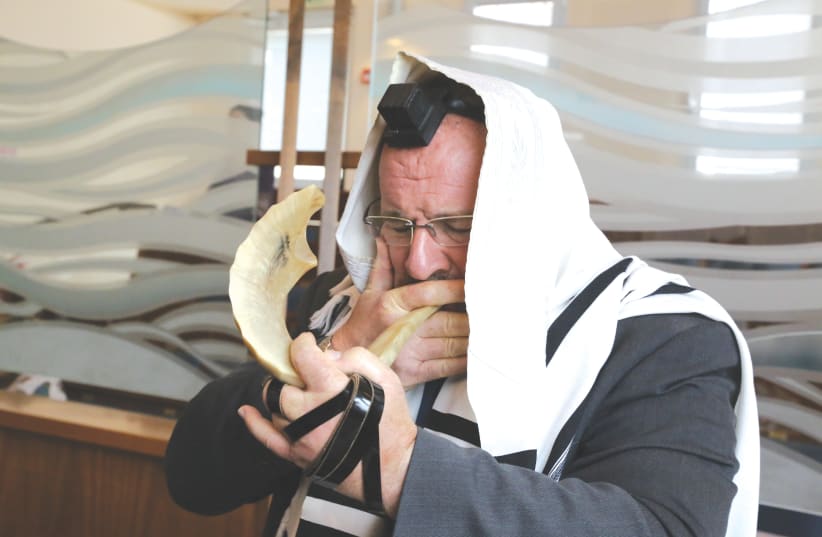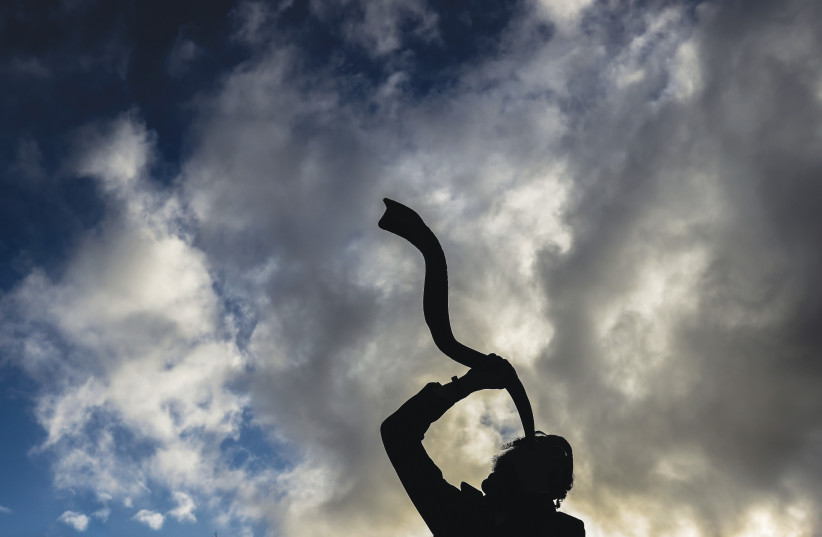The COVID years have been especially difficult during the High Holy Days. In many parts of the world, Rosh Hashanah and Yom Kippur have seen synagogues locked and their congregants under lockdown, feeling depressed, bereft and uncertain. Where normally the synagogues are chock-full on these days, and services are rich in song and prayer, COVID has made a mockery of the holiest days of the calendar.
No crowds gathered, indeed no congregations at all – at least no official ones. No choirs officiated, only occasional budding cantors trying to sing the traditional tunes at home or out in the garden with only the trees and plants listening. No blowing of the shofar with its eerie sounds and piercing calls to repentance. Poor shofar! Back in its drawer, no smile on its face, no loving handling, just silence, just dreams of what used to be.
The shofar is normally the great dramatic moment of the New Year service. It also marks the end of Yom Kippur, with its affirming shout, “Hear O Israel: the Lord is our God, the Lord is One.” If the shofar goes well and the right sounds are emitted, there is a hum of approval. If something goes awry, the congregation shakes their heads and mutters something about Satan Mekatreg, the spirit of mischief, getting into the instrument.
The shofar is one of a range of Biblical instruments listed in the final chapter (number 150) of the Book of Psalms. It is a trumpet, but not in the usual sense of the word. It is not a contrived instrument but merely a hollowed-out ram’s horn. It is not from a cow, as that would remind us of the sin of the Golden Calf. There are popular tales about a Ba’al Teki’ah (a shofar blower), who appears before a court of law. He tells the magistrate he is a shofar blower. The magistrate asks what a shofar is. The hapless litigant says, “A trumpet, Your Honor!” The magistrate says, “A trumpet, eh?” “No, Your Honor,” replies the litigant, “It’s a shofar, not a trumpet!”
Even though the shofar blower has set notes to sound, music is not its main feature: it’s the message that matters. Nor is the art so easy to master. As an apprentice rabbi in London, I discovered the truth of the Talmudic saying as a shofar blower virtuoso at the Bayswater Synagogue.
Blowing the shofar was a well-known, multi-purpose call in Biblical times. Rabbi Saadia Gaon identified 10 occasions when the shofar was used. It announced the Creation, the Revelation on Mount Sinai and the exhortations of the prophets. It proclaimed a military advance and it called for a military retreat. It marked calendar occasions, such as the commencement of a new month, and announced the word of God. One day, it will proclaim the messianic redemption.
The shofar is commanded in the Torah (Numbers 29:1). It has two chief, seemingly contradictory, purposes, as a call to war (Numbers 10:1-10) and as a proclamation of freedom (Leviticus 25:9). Translated into personal, spiritual terms, the first purpose sees the individual struggling with themselves, battling an inner enemy, feeling guilt for the year’s wrongdoing; the second purpose sees the human soul, cleansed of its transgressions, committing to a new regimen that is full of positive possibilities.
“Although the blowing of the shofar is a command of the Torah, it has further meaning: ‘Awake, you slumberers, from your sleep and rouse yourselves from your lethargy."
Maimonides
Blowing the shofar
MAIMONIDES SAYS, “Although the blowing of the shofar is a command of the Torah, it has further meaning: ‘Awake, you slumberers, from your sleep and rouse yourselves from your lethargy. Search your deeds and return in repentance. Remember your Creator, you who forget truth in the vanities of the moment, who go astray after vain illusions that neither profit nor save. Look to your souls, mend your ways and actions, leave your evil path and unworthy purpose, seek the way of the Lord.”
The Zohar sees Divine-human reciprocity in the shofar. It says, “When human beings repent of their sins, they blow the shofar on earth. Its sound ascends on high and awakens the heavenly shofar, and so mercy is aroused and the judgment of doom is removed.”
Sermons on these days tend to focus on the things we have done wrong, but that was hardly the appropriate thought at a time when the enemy was not internal and not ourselves but an external pestilence that polluted every part of the globe. What COVID did to the human heart and soul, the individual, the family, and the social mood and make-up was nothing less than horrific. We could hardly lay the finger of blame on ourselves that year. Nor could the darshanim (professional or qualified expounders of Scripture) rebuke us too robustly.
We were not lacking our faults our failings and our failures, but that couldn’t be the right theme for that year. The war inside our conscience certainly needed attention but not at this moment. The preachers gave notice: once COVID was over, they’d be back on the anti-transgression track but not yet. What was more relevant that year was not the first but the second aspect of the shofar: not the call to war but the cry of peace. The shofar is back on-duty once COVID is more or less gone. Indeed, the retreat of the COVID enemy fitted into the Biblical notion of starting a battle with the shofar blast and using the same shofar to mark the retreat from battle.
The major task that awaited us in the absence of the shofar was to promise to work on our values and virtues. This year, God will tell us how we are doing; this year, the agenda is to get a start on the peace, justice, truth and love that we need to pursue.
The writer is emeritus rabbi of the Great Synagogue, Sydney.

